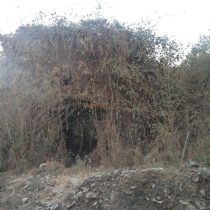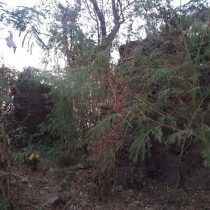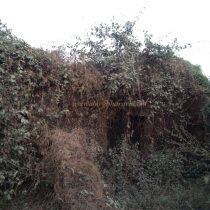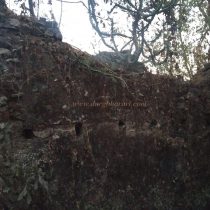NAGLABANDAR
TYPE : COASTAL FORT
DISTRICT : THANE
HEIGHT : 0
GRADE : EASY
Kalyan was an important port in ancient times. Ships sailed through the Arabian Sea via Ulhaskhadi. Ghodbandar and Naglabandar were the ancient ports on this waterway. Four forts, Ghodbandar, Naglabandar, Gomukh, and Ovale Kot were built to protect these ports and waterways. It takes 10 minutes to walk to Naglabandar village after getting down at Naglabandar stop on Thane-Borivali road. Since there is no signboard on the main road, you have to inquire about the village to the local people around you. In many places, it is said that the Naglabandar fort has been destroyed and only a church can be seen on the hill opposite to the fort. But this fort still has a decent amount of remains of various structures which are getting extinct over time.
...
Due to the stone quarries adjacent to the hill and the overgrown bushes, the remains of the fort have been lost and it is difficult to identify whose remains they are. The fort was built by the Portuguese at the mouth of Kamwari Bay to protect Ulhas Bay. Currently, the fort is being used as a toilet by the miners, so one has to be careful while exploring the fort. There is a partially extinguished well that looks like a cistern in the fort, which bears witness to the Portuguese architecture. Stone, clay, and lime have been used in the construction of this fort. The fact that the building was two-storied is also evident from the carvings on the walls of the fort. Considering the available remnants of this fort, this fort must have been used as a watchtower. Its appearance has changed as the protective walls around it have collapsed. The special feature found in the construction of this fort is the compartmented section or rooms. Its interior has a seating arrangement parallel to the wall. If these remains are not taken care of in time, Naglabander fort-like Gaimukh fort and Ovale Kot will be destroyed in time. The fort is small in size and can be seen in ten minutes. Using small forts, watchtowers, and long-range cannons, the Portuguese established their empire on the sea lanes of the North Konkan. Originally built by the Portuguese in the 16th century, the main purpose of these watchtowers was to protect the waterways and to provide necessary supplies for the small and large forts in the province. In 1737, during the Maratha conquest, Naglabandar fort and its environs came under the control of the Marathas, and the Portuguese were wiped out from the area. People coming here with an expectation to see a fort are like to be upset but if you want to see the Portuguese outpost on the maritime trade route and its geographical importance, you can visit this place.
© Suresh Nimbalkar




